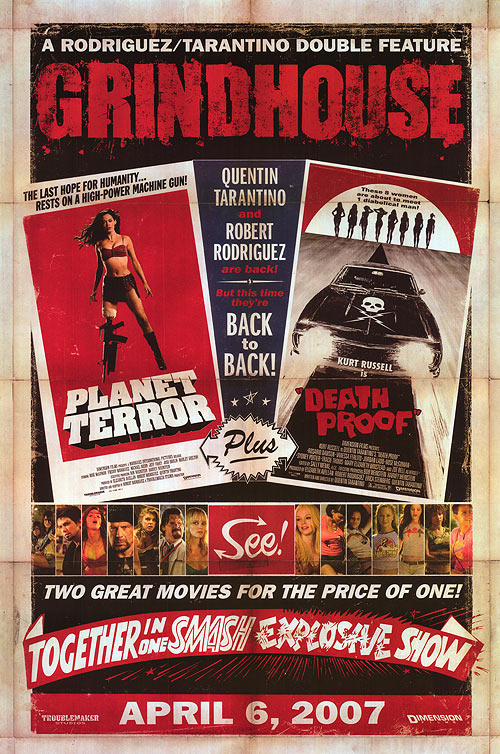This year, the experimental film “Grindhouse” turns 10 years old, and a decade later, its theatrical misfire remains an unfortunate mystery.
“Grindhouse,” released on April 6, 2007, was a throwback to an older era, a cinematic nod to films of the past that pushed buttons and tested the artistic taste of both audiences and filmmakers.
The film was the vision of writer/director icons Quentin Tarantino and Robert Rodriguez, two of the film industry’s most interesting and innovative filmmakers. After more than ten years making movies, the two directors set their sights on an experience not seen in movie theaters since the heyday of the 1970’s: one ticket, two movies, and more lurid sexuality and over the top violence than much of what exists on the current silver screen.
Rodriguez made “Planet Terror,” a John Carpenter-esque reimagining of a zombie outbreak, and Tarantino made “Death Proof,” a reworking of the slasher genre featuring a deranged stuntman with a car rather than a masked killer with a knife.
The two feature-length films were packaged together with fake movie trailers at the beginning and intermission of the two films. The result was a night at the movies unlike anything audiences had seen — not at least since those glory days of the 70s.
Despite the two-for-the-price-of-one idea, complete with extra goodies by way of directors like Rob Zombie, Edgar Wright, and Eli Roth, the film failed to cross into mainstream success. Even the marketing campaign, which had a voice-over in the trailer that actually defined the term “grindhouse,” wasn’t enough to bring moviegoers up to speed.
When looking at everything surrounding the film, it’s difficult to believe that the cultural cache of the directors wasn’t enough to win audiences over.
For horror fans, the movies had everything you could want: thrills, chills, blood and guts, creepy music, an unsettling mood, an uncertainty about your trust in who’s in charge, and enough references to older films to keep trivia nuts on their toes. Beyond that, for movie fans in general, the experience was about as cinematic an experience as one could get — short of seeing it in the drive-in.
But it did not connect with audiences outside the giddy, popcorn-munching crowds of genre fans. It could be because of the subject-matter or the length (the theatrical run-time was in excess of three hours), but something about it turned potential ticket buyers off.
The fact that the movies are turning 10 is more than a sufficient enough reason to revisit them. It’s unfortunate that the experience of a trailer, a movie, more trailers and cartoons, and a second movie can’t be recreated — at least not to the perfect level it was 10 years ago, but one can try.
Very few contemporary films offer the truly visceral experience that “Grindhouse” was able to provide. It’s the kind of idea that propels cinema forward; it’s a little bit of the past, blended with the present. It’s a treat for anyone willing to take it on.
Besides, where else can’t you find car chases, melting faces, and a love story featuring a girl who has a machine gun for a leg?

